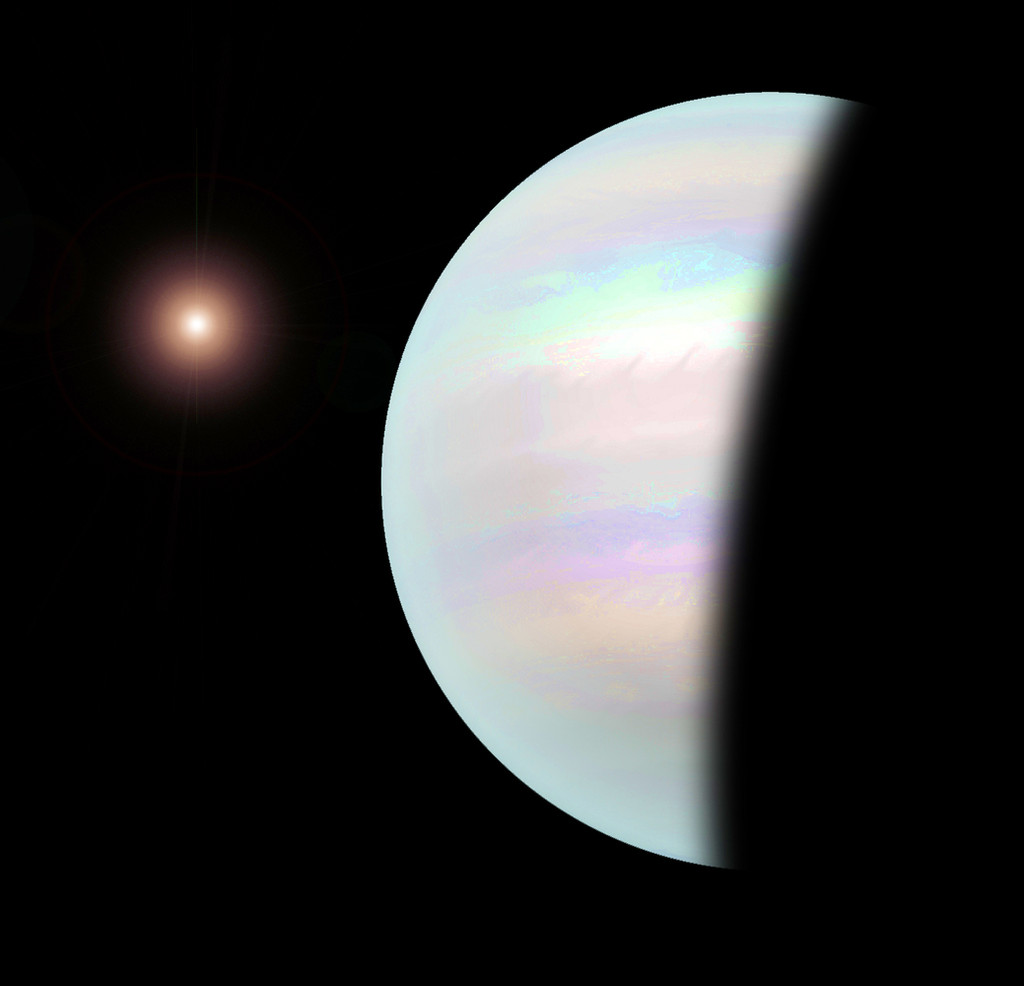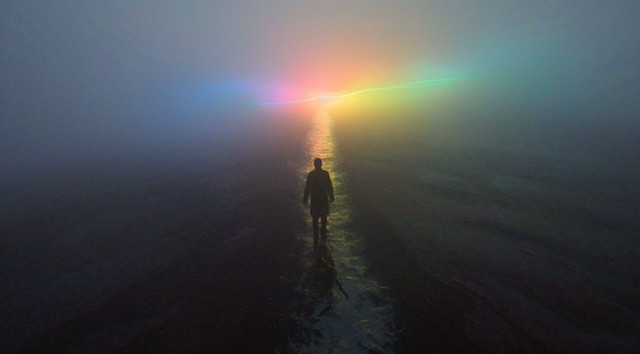HOME | DD
 Zerraspace — Planet Meios
Zerraspace — Planet Meios

Published: 2012-11-10 14:07:42 +0000 UTC; Views: 2341; Favourites: 14; Downloads: 9
Redirect to original
Description
There was nothing in the Stephara system that would have drawn attention to its corner of the Kanangar Sector – just a lone K5 star with a couple of planets and a brown dwarf lacking any strategic value. Even the most habitable world was only marginally more comfortable than Mars, but the system’s location was enough to warrant man’s consideration. Not far to the south, human colonists were still securing ground on the new world of Keras, and not far east of it lay the Sierra Sector’s burgeoning outposts. A base here could act as a waystation for ships traveling between the growing colonies and an eventual rallying point for a possible military campaign should hostilities arise with the Kerasian xenosophonts.When the Stephara station finally arrived several probes were launched towards the identified planets, whether for simple data collection or to reexamine worlds for potentially unnoticed resources remains unknown. All that is remembered is what was found by the Meios orbiter. The planet itself had already been the subject of intense debate by astronomers as a celestial oddity but little else; massing 9.193 Earths and with only white/grey clouds visible from above, it had originally been mistaken for a gas giant, when further research revealed an even odder truth. This was actually a very large terrestrial world, a so-called “Super-Earth”, though the resemblance lies only in name; gravity is fully three-and-a-half times higher and the atmospheric pressure three-hundred and forty times that we’re familiar with. Conditions on the surface, if any land existed, would be dim, hot and muggy like a worldwide sauna, and while abundant oxygen was present in the atmosphere, the world was deemed entirely unfit for human habitation and henceforth ignored.
That was before cameras caught a metallic flash high up in mesospheric clouds, and suddenly all priorities changed, for it is not humans who gave Meios its name, rather the children we found there.
Related content
Comments: 24

I'm glad you think so. These actually weren't my first choice of colors; I had originally intended for the planet to be cloudy white, but once I mapped the "surface" to a sphere and added lighting the contrasts became imperceptible so I continuously modified it till a gradient emerged. Interestingly, when I tried this again on the original cloud map, the colors that emerged were dark brown and green... I might just display that image.
👍: 0 ⏩: 1

Oh thats interesting :d, a dark green and brown for a gas giant, never really seen that before to be honest :d
👍: 0 ⏩: 1

I've pictured it here ( [link] ), if you're interested.
👍: 0 ⏩: 1

Ah, so this is it. The terrestrial-gas-giant chimera you described in "World in a Bubble". Is there any land on the surface?
👍: 0 ⏩: 1

There is indeed land, but only in the form of small archipelagos and none of the individual islands is of considerable area. The surface might have been Earth-like (at least in shape) save for vastly elevated oceans, so only the tallest mountain peaks protrude from the water.
👍: 0 ⏩: 0

It pleases me to hear you say that, but I'm afraid I don't understand the question.
👍: 0 ⏩: 1

Sorry, even I'm not good at English, asked how did the picture.
👍: 0 ⏩: 1

DreamingSky's "Cooking with Gas" tutorial serves me well ( you can find it here [link] ), but it requires three major modifications. For a good looking planet, you need much higher resolutions (I typically use 4000x2000, but smaller can work, so long as width is exactly twice height). Before liquifying, I use Photoshop's Distort > Polar Coordinates to get an idea what the planet would look like as a sphere, which allows me to remove seams and rough edges - after this I use the feature again to change it back to a flat map. Then use Photoshop's 3D models > Sphere or GIMP 2.0 Map Object > Sphere then scale to change the map into a spherical object. Save the resulting image then work on the backdrop, adding the planet as needed. Simply selecting an area with the Elliptical Marquee Tool and filling it will black will create a convincing shadow, while the sun is accomplished by playing with the Render > Lens Flare option.
However, I am utterly incompetent in creating nebula and convincing star fields - the existing tutorials are geared for much lower resolutions than I am accustomed to, and many of the effects they rely on disappear at these levels.
👍: 0 ⏩: 1

Ok. thanks for the tutorial.
👍: 0 ⏩: 0

I like the detail you put into the description, but there are a few things that will need to be changed:
For some reason your friend Whachamacallit can't wrap his head around the idea of multiple story universes, so he only wants his original Hades to be in his story universe as opposed to OPaaT. For now he has opted to sponsor a lifeless gas giant ([link] ).
Another thing to keep in mind is that in OPaaT the year is 10,000 AD, so chances are that astronomers have seen plenty of other planets like Meios.
Meios will be the first super-earth on OPaaT. I'm glad you chose to do something different than just another typical terrestrial world or gas giant
👍: 0 ⏩: 2

Oh, sorry about that! It's just that I got a much larger population of Gelkolos than required for OPaaT, and I'm a bit too lazy to rewrite the entire story in order to compensate for their required population reduction. I got some other ideas, which I'll post up when they get more refined.
Oh and in order to stay on topic, this is very nicely made Zerraspace! But what made you decide against the sort of canyon desert world?
👍: 0 ⏩: 2

Thank you for the compliment! This is my third attempt to draw this world, as I had tried juggling the impressions of thick atmosphere and terrestrial world at once (the only world that remotely resembles this situation is Venus, which nobody seems to have tried to mimic). Drawing on this source for inspiration, I've found some images of Venus' cloud layer that seem very like a gas giant, and so decided to return to this approach I was more familiar with. Next was the problem of drawing water clouds, as the imperceptible whites were very easily lost in each other (I had to darken and improve contrast on this image for almost an hour, by which point the white water cloud effect was lost, but I so liked the resulting effect that I decided not to bother further with it).
I'm not forgetting about the canyon world; if I am still contributing to this project a year from now, I will post it as my second world. I decided to proceed with Meios firstly because it struck me as the more original and interesting world (the canyon world reminded me vaguely of Chris Wayan's Tharn - [link] ) and because I wanted a chance to work on a very high gravity world which would not have allowed the nearly airless conditions required for my desert (high gravity worlds accumulate more material and so will almost certainly have thicker atmospheres), as I have yet to find a satisfying example of a very high gravity world on the web (Hades is as high as I've ever seen specified, and while I appreciate your considering this condition, it's still not quite the range I'm looking for).
You could still include Hades in the One Planet at a Time project by using an alternate continuity - I've done the same with Zainter to include it in multiple stories (in the all-human universe, Zainter has pre-sapients but is inhabited by humans; in the humans-and-aliens universe, it is the homeworld of an alien regime). I was somewhat tempted to include another continuity of Zainter in One Planet at a Time, but didn't see how it fit into the current scheme (Zainter was designed specifically to host huge populations, something which the project currently does not allow).
👍: 0 ⏩: 0

Gotcha, that makes sense now. You could potentially put the Hades with the population you want near Meios in the future, but you'd have to get through a number of lower-population beginner planets first.
One thing you could do (if Zerraspace is okay with it, of course!) is team up and just work on Meios for now, and then team up on Hades together later. You both are interested in each other's worlds, and the 100-deviation quota is a lot of work, so why not collaborate?
👍: 0 ⏩: 1

Well, I guess. But I'm a pretty terrible co-worker. I'll just finish brainstorming my idea and later post it up. Let bygones be bygones, right?
👍: 0 ⏩: 1

Exactly 
👍: 0 ⏩: 1

Understandable, I just didn't want to seem like a dick
👍: 0 ⏩: 0

I've replaced all references to the Hades system with the Keras system, as the sector at current seems fairly empty and the world is far from other habitation.
When scientists refer to Meios as a "celestial oddity", they are not referring to its nature as a Super-Earth but the confusion regarding its nature. Meios' mass is very close to the fuzzy border between gas giant and terrestrial planet; without visiting the system it's very difficult to judge the size of a planet remotely, hence its density and overall composition were all but impossible to determine. This requires images or at least seeing its shadow across the star, and once it was identified as a Super Earth, other characteristics made it stand out. Knowing mass and radius, scientists could determine gravity, and even for a Super-Earth, Meios has extremely high gravity (only a pure iron Super Earth would have higher). By analyzing light reflected off the planet through spectroscopy, its atmospheric composition could be determined, and it was discovered to possess hugely abundant oxygen, suggesting the presence of life.
This alone was not enough to justify sending a research team, as conditions, even those that could be determined at this point, were too adverse for humans to benefit. Once the station was sent, it was a minor matter to launch robotic probes to take a closer look.
👍: 0 ⏩: 1

Gotcha, thanks for making the changes. I appreciate it
If you'd like I could move Meios closer to Keras...perhaps in the Galactua Sector, or the Keras Sector itself?
👍: 0 ⏩: 1

Place it where you think it most useful; Keras will be a bit of a journey from where it is at current, but it seems roughly equidistant from the worlds of the Keras, Sierra and Galactua sectors, allowing it to carry out its role as planned. I wouldn't mind it being placed a lit bit farther in the corner.
👍: 0 ⏩: 0



























